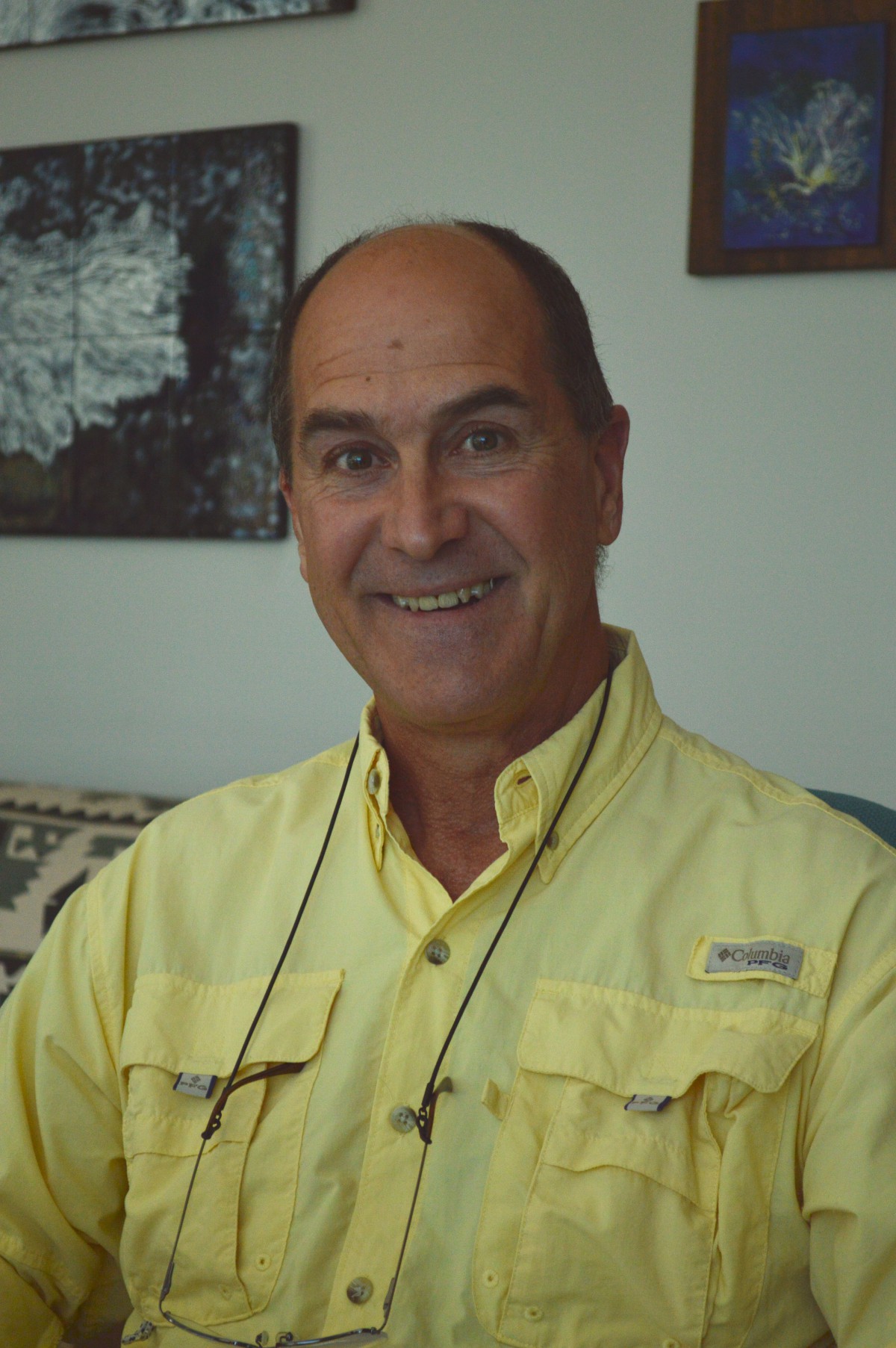
Frank Muller-Karger began exploring the ocean as a child in coastal Venezuela.
Born in Raleigh, N.C., Karger, 58, moved to the small town of Arrecifes at about 6 months old with his parents. There, Karger watched Sea Hunt, 20,000 Leagues Under the Sea and The Undersea World of Jacques Cousteau. He also fished and swam with his father and read the works of 20,000 Leagues creator Jules Verne. His curiosity led him to a career in ocean research.
Now a biological oceanographer at USF’s College of Marine Science – administratively attached to USF Tampa despite its location on the USF St. Petersburg campus – Karger will soon use his lifetime of experience to help lead a team of researchers on a government-backed voyage into the Atlantic Ocean to study the biodiversity of two national marine sanctuaries – the Florida Keys and California’s Monterey Bay.
The goal of the program, known as a marine biodiversity observation network, is to preserve these ecosystems by counting and identifying the various species of marine life that live there.
“For this particular grant, there was an opportunity: The government wants to understand biodiversity and how it’s changing … our food depends on it and our health depends on it,” Karger said. “If we end up with a drastic decrease in biodiversity, we’re gonna end up having a negative impact on our own economy and jobs because it means that we may lose certain types of fish. We may lose the very touristic attractions that an area may have and we may lose the opportunity to discover new chemicals for pharmaceuticals.”
Karger’s team is one of three selected from a pool of 19 that submitted proposals for the program. The other two teams will be divided between California’s Channel Islands National Marine Sanctuary off the Santa Barbara coast and the Arctic Alaskan waters of the Chukchi Sea. While it isn’t a sanctuary, Alaska’s arctic waters are experiencing significant temperature spikes that are having a detrimental impact on the ice and frigid waters that harbor a vast amount of marine life.
The program will receive $17 million in funding over five years from NASA, the National Oceanic and Atmospheric Administration (NOAA), the Interior’s Bureau of Ocean Energy Management (BOEM) and Shell Oil Co., which will contribute to the Alaskan project.
Karger’s team will receive $7 million of the overall budget with $5 million coming from NASA, where Karger completed a fellowship in 1988 while finishing his Ph.D. at the University of Maryland. The call to action for the program was made by the federal government, which wants the teams to find out what kind of organisms live in a specific area and at what times.
“What we are trying to measure is the diversity of life – how many species are there, what kind of biomass each one of these groups of species contributes to an ecosystem, and then how do they fit in what we call the ecosystem, which is just a collection of different habitats,” Karger said.
Woody Turner, who is serving as the program manager at NASA for the project, said Karger’s skills with technology-based oceanography place him at the top of his field.
“(Karger) is an expert at integrating marine satellite observations with observations from multiple types of in-water platforms,” Turner said. “He is also one of the best satellite oceanographers alive today. His skills at building networks of investigators are very high.”
Biomass is a carbon-based organic compound taken from living or recently deceased organisms. It is constructed from the carbon dioxide that is found in the atmosphere and absorbed by plants with help from the sun. Any animals that consume plants will also contain biomass.
Because larger organisms are more difficult and expensive to study, most of the research will be conducted at the lowest level of the food chain – the microscopic level.
The objective is to collect water samples containing the biomass of various organisms and measure it using chemistry, microbiology or microscopy. This will give researchers an idea of what types of organisms inhabit an area.
For years, NASA has observed the ocean’s surface from space with the use of satellites. But Karger said that with satellites, researchers can’t see what lurks beneath.
“The ocean is three dimensional, so you can’t just look at the surface like satellites do; you gotta look below the surface,” Karger said.
Another important aspect of the project is the identification of invasive species of plants, animals and bacteria that wreak havoc on the Atlantic’s ecosystems. Lionfish, native to the Pacific Ocean and a deceptively alluring, venomous species of fish, are a prime example of the types of marine life known to overtake a reef system and diminish its diversity.
“We need to understand how life in the oceans (is) changing,” Turner said. “It is not an exaggeration to say that our survival as a species depends upon it.”



